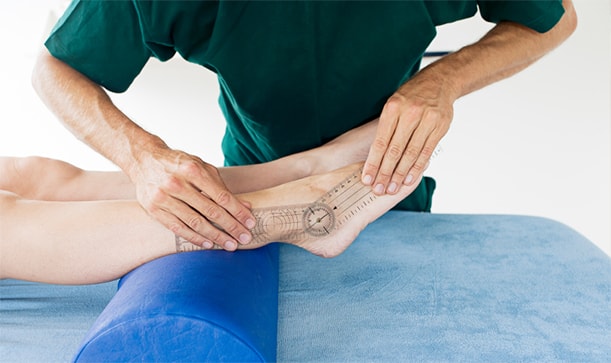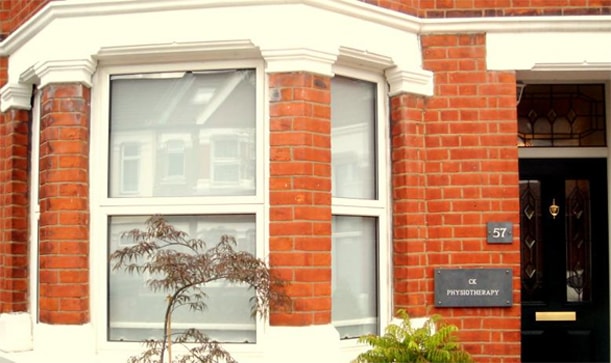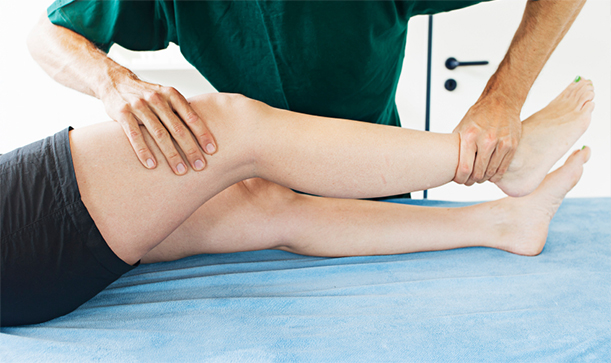CK Physiotherapy
AREAS COVERED
W7, W5, W13, Ealing, West London
57 Elthorne Avenue
Hanwell, W7 2JY
T: 020 8566 4113
M: 079 572 46185
E: info@ckphysio.co.uk
Location / Parking
We are situated in Hanwell, between Boston Manor Road and Northfields Avenue, south of the Uxbridge Road.57 Elthorne Avenue
Hanwell, W7 2JY
There are parking restrictions Mon - Fri 9-10am and 2-3pm. If you need a permit during this time please inform your therapist when you arrive. There are no parking restrictions at other times.
Opening Times
Please phone the number above during working hours to make an appointment. Our reception service will be happy to book your session.
London Underground / Bus Services
London Underground
10 min. walk from Boston Manor Tube Station.
15 min. walk from Northfields Tube Station.
Bus Service
E8, E3, E2, 207, 607, 83
Request Call Back
Our Blog
Physio Advice: Differences Between Cryotherapy and Heat Therapy
By: admin Date: Jul 26th, 2022Cryotherapy and heat therapy (also known as ice and heat therapy) are extremely beneficial.
The problem is, knowing when to use cryotherapy treatment, or heat treatment and what’s the difference!
Today we will be giving physiotherapy advice on
-
How and when to use cryotherapy and heat therapy
-
The benefits of cryotherapy treatment and heat treatment
-
Precautionary measures when using cryotherapy and heat therapy
-
When and where to seek help if cryotherapy and heat therapy do not work
We’ll stop blowing hot and cold and dive straight in!
How and when to use cryotherapy and heat therapy
To keep it simple, cryotherapy treatment is often used for swelling and pain from injuries.
Whereas heat treatment is often used for chronic pain, muscle spasms, and inflammation.
When should you use either one?
The best time to use cryotherapy and heat therapy depends on the type of injury or illness you are treating.
So, let’s break this down a little bit more!
Cryotherapy treatment
Cryotherapy is the process of using cold temperatures to treat injuries or sore muscles.
Exposed to extremely low temperatures, it causes vasoconstriction and reduces inflammation.
Cryotherapy treatment is used immediately after injury to reduce pain and inflammation. It should be done for 10-20 minutes at a time, every 3-4 hours.
Heat treatment
Heat therapy, on the other hand, involves using warm temperatures to treat injuries or sore muscles.
It enhances circulation by warming up the blood vessels and helps to reduce inflammation and pain.
Heat treatment should be used on chronic or recurring injuries, or if you are recovering from surgery.
The benefits of heat therapy are that it is more economical, easier to apply and less likely to cause discomfort than cryotherapy.
However, cryotherapy and heat therapy have combined benefits when used at various phases for things such as sprains, strains, muscle spasms, other soft tissue injuries and more.
Steps to treat an injury with cryotherapy and heat therapy
You’ve injured yourself and are probably in extreme agony, with severe swelling.
You want relief and want it quick!
Here is some physiotherapy advice with steps for natural relief with cryotherapy and heat therapy.
Phase 1: Acute injury (1-5 days)
The first stage is an immediate response to injury or trauma. This includes inflammation, swelling, increased redness and pain, as well as decreased movement in the affected joints.
What should you use for acute injury?
Cryotherapy treatment
Ice, a pack of peas (or sweetcorn if you prefer!), or even a gel pack. Whatever you have, get it on and let it get to work until it begins to feel numb but no longer than 20 minutes.
If possible, elevating the injury will also aid in reducing the swelling and inflammation. See the RICE method.
Ice/ice pack should never be applied directly to the skin, on an open wound or bony part of the spinal column. Ensure you have a barrier/covering between the ice and your skin.
Phase 2: Subacute post-injury (3-8 weeks)
After a few days, the pain and swelling should be considerably less. At this stage, cellular generation and tissue repair are occurring.
However, you may still have trouble and discomfort when stretching the injury or using it in everyday activities.
You want to promote healing and have minimal scar tissue. What should you use for a subacute injury?
Cryotherapy and heat therapy
If you still have considerable redness or swelling apply cryotherapy treatment as instructed in the acute injury phase.
If it has significantly reduced and you are experiencing pain outside your normal range of movement, then apply heat treatment for up to 20 minutes at a time, every 3-4 hours.
Make sure your heat pack is never applied directly to your skin and is at a bearable temperature to not cause further injury, burns or irritation.
Phase 3: Chronic post-injury (8 weeks +)
At this phase of inflammation, there’s continuous healing of damaged tissue. This can last up to several years!
Hence why, if not treated properly, many suffer from aches, pains, and complications from ‘old’ injuries.
To avoid this, seeking physiotherapy advice and treatment for chronic post-injury is advisable.
In this phase, it's important to reduce the formation of scar tissue to ensure optimal healing. This can be done through various physiotherapy approaches and techniques.
But in the meantime, what can be used for chronic post-injury?
Heat treatment
Apply heat treatment as described in the subacute phase to relieve aching and scar tissue formation. And ensure you receive physiotherapy treatment 1-2 times a month to reduce scar tissue and increase your strength, stability, and range of motion.
Source: When to Use Ice and Heat During Stages of Inflammation - Best Spa | Olympia, WA (ballaura.com)
We all like a simple life, with memorable phrases to help us recall what to do and when.
So, like ‘lefty loosey, righty tighty’ to recall the direction to turn a screw, nut, or bolt.
Use ‘new cold, heat old’ to remember when to use cryotherapy and heat therapy.
The benefits of cryotherapy treatment and heat treatment
Cryotherapy and heat therapy have been proven to be effective for athletes recovering from injuries, for people who have chronic conditions such as arthritis, and can reduce pain in people who have had surgery.
What can cryotherapy and heat therapy be used for?
-
Arthritis
-
Osteoarthritis
-
Gout
-
Strains & sprains
-
Tendonitis
-
Frozen shoulder
-
Plantar fasciitis
-
Post-surgery recovery
The benefits of cryotherapy and heat therapy can be instantaneous, yet some work in the background and takes longer to present themselves.
-
Natural pain relief
-
Reduce muscle spasm
-
Promote tissue/cell regeneration
-
Lessen muscle and joint stiffness
-
Increase circulation
Source: 7 Cryotherapy Benefits: How Cryotherapy Can Improve Your Health (healthline.com), THERMOTHERAPY & CRYOTHERAPY: HOT & COLD THERAPY BENEFITS - Clearlight Infrared Saunas, Heat Therapy and Cryotherapy | The Neck and Back Clinics
Precautionary measures when using cryotherapy and heat therapy
Although cryotherapy and heat therapy are natural ways to heal injuries, reduce pain and minimise swelling and inflammation. Like any treatment, it comes with restrictions and precautionary measures.
You should not use cryotherapy and heat therapy without physiotherapy advice first, if you have, or a history of:
-
Diabetes
-
Circulatory problems
-
Peripheral nerve disorder
-
High blood pressure
-
Stroke
-
Seizures
-
Dermatitis
-
Open wound
-
Numbness
Source: Cryotherapy vs. Thermotherapy: Which is Better for You? (carolinachirocare.com), Heat and cold treatment: Which is best? (medicalnewstoday.com)
There are also side effects to be aware of when using cryotherapy and heat therapy
-
Condition worsens
-
Skin irritation
-
Significant discomfort
If this happens, discontinue the application immediately and seek physiotherapy advice.
When and where to seek help if cryotherapy and heat therapy do not work
If your injuries are not healed or still causing you pain and problems after using cryotherapy and heat therapy; you need to seek further physiotherapy advice.
At CK Physio we use a range of physiotherapy approaches and techniques to get you into tip-top shape and back to enjoying life.
If you’re currently experiencing any of the mentioned symptoms and wish to discuss the possibility of physiotherapy treatment. Use our online booking form to secure your first consultation.
Use this time to speak with our physiotherapists and explore the range of treatments we have for you.
Don’t leave it!
If you’re not fully healed between 4-8 weeks after injury, surgery, or illness, you need further physiotherapy advice and assistance.
Ref: https://pharmaceutical-journal.com/article/ld/thermotherapy-and-cryotherapy
Heat and cold treatment: Which is best? (medicalnewstoday.com)
Heat Therapy Treatment By Physiotherapists (thephysiocompany.com)
Heat Treatment - Physiotherapy - Treatments - Physio.co.uk
Thermotherapy - Physiopedia (physio-pedia.com)
Heat Therapy - Sports Rehabilitation - When To Apply Heat (sportsinjuryclinic.net)
What Is Cryotherapy? Benefits & How to Do It At Home or a Clinic - Ortho Bracing
Heat or Cold for Arthritis: Which Is best? (healthline.com)
Cryotherapy vs. Thermotherapy: Which is Better for You? (carolinachirocare.com)
THERMOTHERAPY & CRYOTHERAPY: HOT & COLD THERAPY BENEFITS - Clearlight Infrared Saunas





